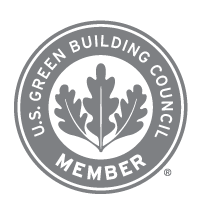Asphalt Road Maintenance in the Age of COVID-19 Pandemic
Category: Blog Articles By: John Calvert
This year has been a very difficult one with most agencies being affected by the COVID19 pandemic in their daily operations, and many being forced to cut their asphalt pavement maintenance budgets. I’ve heard where some agencies have cut their entire paving budget, while others have only cut that part of the budget funded by local general funds, but not the part funded by state gas taxes.
Unfortunately, roadway pavements don’t care about pandemics or budget cuts!
During my 40+ years working in public works and pavement preservation I’ve seen many times where agencies are forced to cut their pavement maintenance and/or roadway paving program budgets. Unfortunately, during these trying times the pavement wearing surfaces do not take a break from aging. They keep aging each and every day, every week, every year due to their constant exposure to the sun’s UV rays and varying weather conditions. Pavements are kind of like each of us, in that we continue to age every year regardless of how much income we may or may not earn that year.
I’ve seen too many agencies reduce asphalt pavement maintenance activities during tight budgets thinking they were saving costs. However, experience has shown that many of these agencies end up with higher costs in subsequent years, thereby reducing their bang for the buck. This is because history has shown that the worse a pavement’s condition gets, the more costly it will be to bring it back to good condition. The old adage of “You can pay me now, or pay me later, but you’re gonna pay me,” is very applicable for pavement maintenance budgets.
Agencies can work to minimize the impact of budget reductions by concentrating the available funds they have on various pavement preservation processes. This approach will allow the agency to address almost as many miles of roadway, and sometimes even more, than they would have been able to address without the budget cuts.
For example, an agency with an asphalt pavement maintenance budget of $1.8 million may have planned to resurface 20 miles of roadway, crack seal 10 miles and surface treat 10 miles with a rejuvenator. That agency would have addressed 40 miles of roadway.
However, due to budget cuts the agency now only has $500K for maintenance contracts. The agency can minimize the impact of the budget cut by still addressing nearly 33 miles of roadway, if they choose to resurface two miles of bad road, rejuvenate 18 miles and crack seal 13 miles.
The agency did not address the 40 miles it had hoped to, yet even with a nearly 70 percent cut in funds, it was still able to extend the service life of 33 miles!
During these difficult times, those agencies that think outside of the box can still keep their roadway pavements in good condition. Those that don’t for whatever reason will ultimately pay for it with poorer condition roads and higher maintenance costs in coming years. It does not matter if an agency has a road network of only 50 miles or of 1,000 miles or more. There is always a way to minimize the impact of asphalt road maintenance budget cuts.







